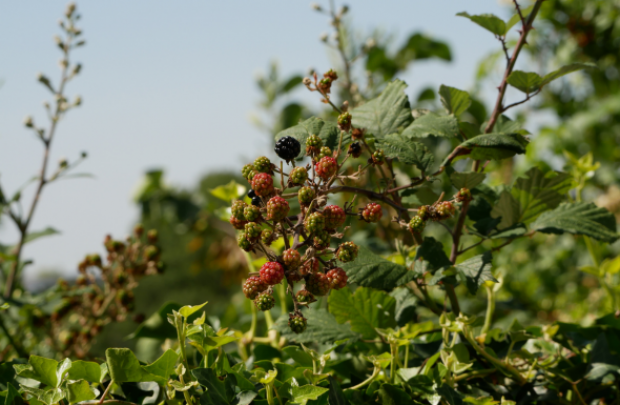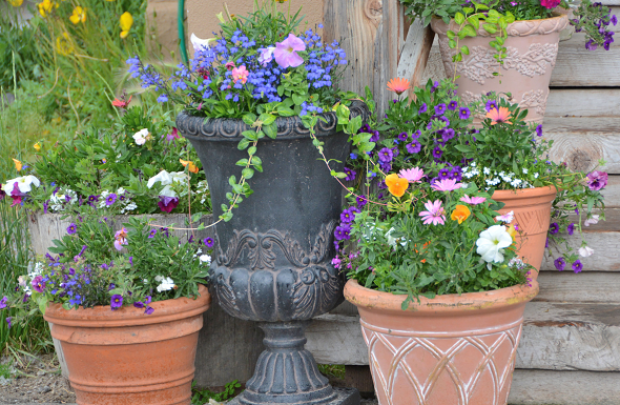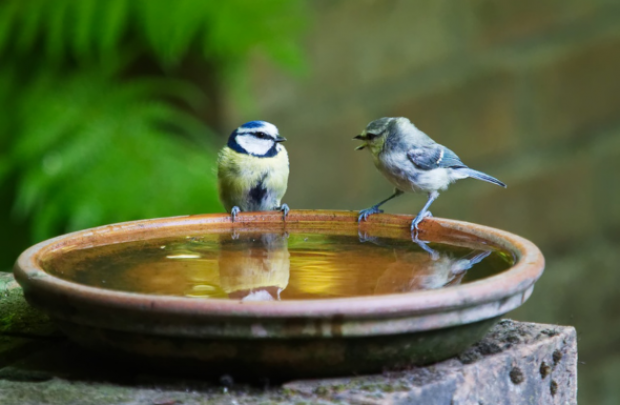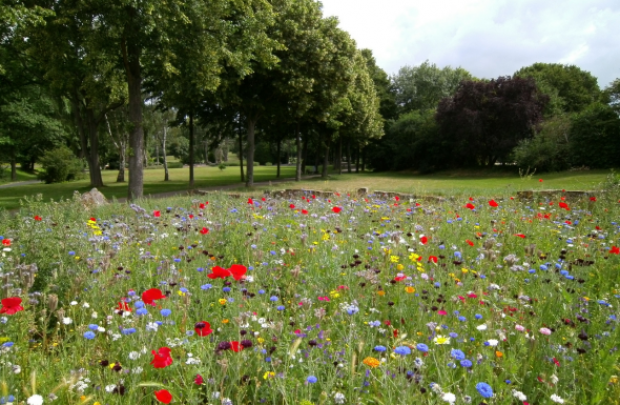Discover toads and how you can help them
Written by Cathy Robinson, nature and travel writer
Have you been lucky enough to spot a pair of copper-coloured eyes peeping out from a hidey hole this spring?
If you have toads on your patch, they’ll have lain low during the colder months, snug in your compost heap, hiding in a pile of dead wood or burrowed into mud, only coming out to forage during mild spells.
When you do see one, it will most likely be the common toad (bufo bufo) - meaning ‘toad toad’. Two species of toad are native to Britain, the other being the very rare natterjack toad bufo calamita, found on sandy heaths and dunes in a few areas of the UK.
The common toad is fairly widespread throughout Britain, although absent from Ireland. But its numbers are declining. Estimates suggest we’ve lost two-thirds of our common toads over a 30 year period.
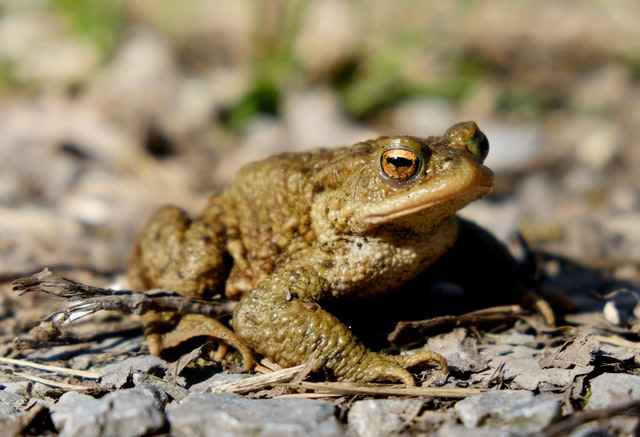
Is it a frog or a toad?
A toad’s skin appears much dryer than a frog’s and it is knobbly or warty. The warts contain a vile-tasting substance designed to deter predators. Toads also puff themselves up when threatened.
When they want to move from one place to another toads walk or crawl, whereas a frog will hop or leap, often some distance.
Toads vary in colour from dark brown to green and even grey. There’s some evidence they can develop their skin pigmentation to match the predominant background colour of their habitat – a handy technique to prevent them standing out to predators’ beady eyes.
Although nowadays toads are welcomed into the garden, it hasn’t always been so because even as recently as the 18th century, toads were thought to be witches’ familiars and a sign of bad luck.
Toads on the move
Toads, along with frogs and newts, are amphibians. They live the first part of their life in water when they develop from tadpoles, then they return to water to breed, and spend the rest of their time on dry land.
Toads are well-known for travelling long distances to spawn in a particular pond – many like to return to the pond they started their life in. They have a superb homing instinct and will cross all manner of obstacles to reach their preferred pond, often being squashed by cars on their way. Some estimates suggest as many as 20 tonnes of toads are killed on UK roads each year during migration, usually during February and March.
To try and help toads on the move, UK wildlife charity Froglife run a ‘Toads on Roads’ project, monitoring pedestrian toads and installing warning signs for drivers. They help co-ordinate local Toad Patrollers who look out for any toads marching across roads and transporting them to their pond, away from danger.
Once they’ve made it safely to the pond, the male will hop onto the female’s back and grasp her with special nuptial pads, areas of thickened skin on his front feet. Often other males will join in the fun, resulting in a mass of squirming bodies known as a mating ball.
If you’re lucky enough to have toadspawn in your pond, you’ll notice rather than clumping together in a floating mass like frogspawn, it appears as long strings, wrapped around submerged pond plants. Each strand contains a double row of black eggs.
Toad tadpoles emerge after around 10 days. Darker in colour than frog tadpoles, they sport a shorter tail and bigger head. Tiny toadlets usually start leaving the pond around May, typically after a spell of rain.
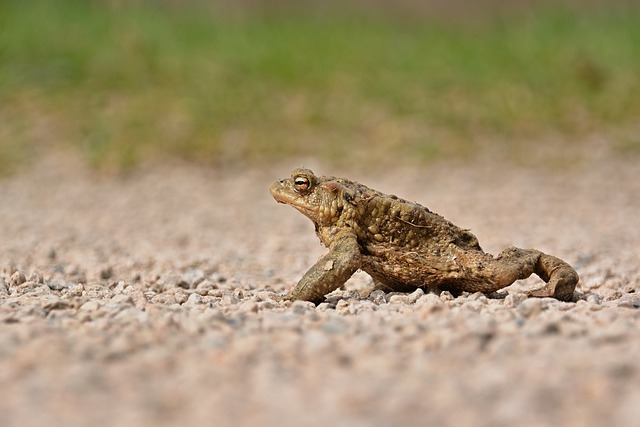
How to be toad friendly
Like many species of wildlife in the UK, habitat loss is a major issue for the common toad, alongside disruption to their migratory routes.
If you’d like to attract toads to your patch, remember they seek out shady places where they can keep cool and moist. You can provide them with some habitat by leaving undisturbed heaps of damp leaf litter and piles of logs, which they love to hide in. Take great care if you turn your compost heap to make sure there are no toads sheltering inside.
Unlike frogs, toads don’t tend to live in ponds, despite spawning in them, and although they like humid conditions they can tolerate dry areas far better than do frogs. However, installing a wildlife pond will give them somewhere to breed without undertaking a potentially perilous journey. Wood and stone piles, along with vegetation cover near your pond will provide a toad with a safe haven.
If you can leave an area of your garden to go wild you’ll be supplying some much-needed toad habitat and safety from predators.
Don’t use slug pellets, because toads love feasting on slugs, making them a great ally to the gardener.
Toads need to be able to get into your garden in the first place, so talk to your neighbours about leaving small gaps in fencing, creating wildlife corridors.
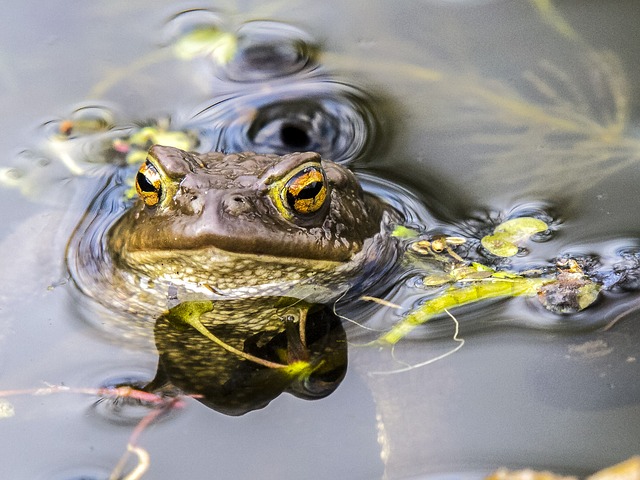
Above all, enjoy your toad encounters!
